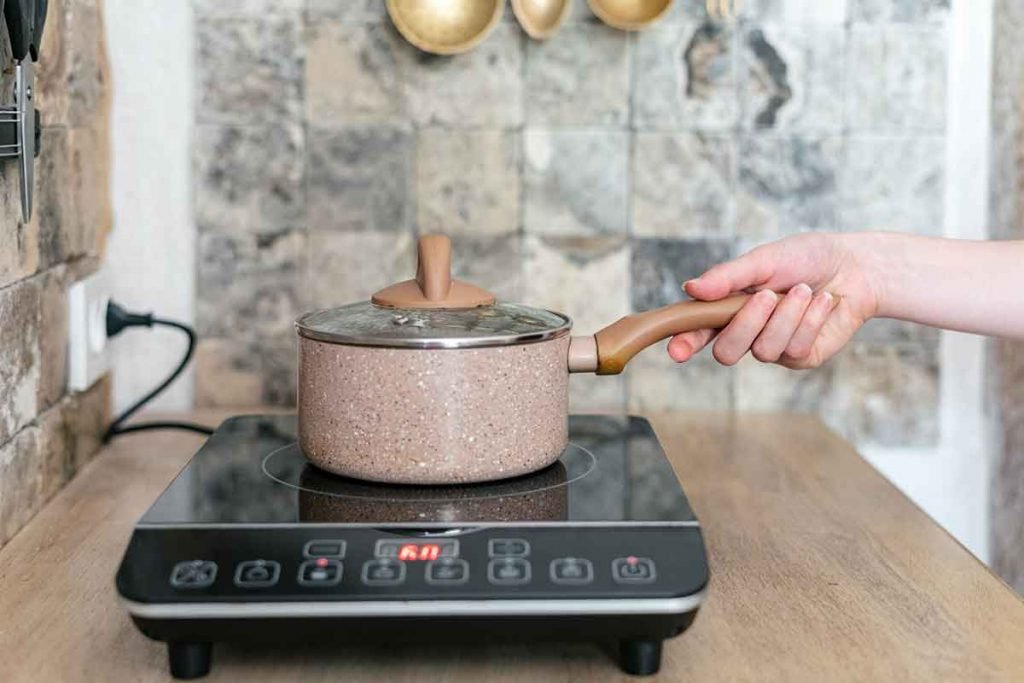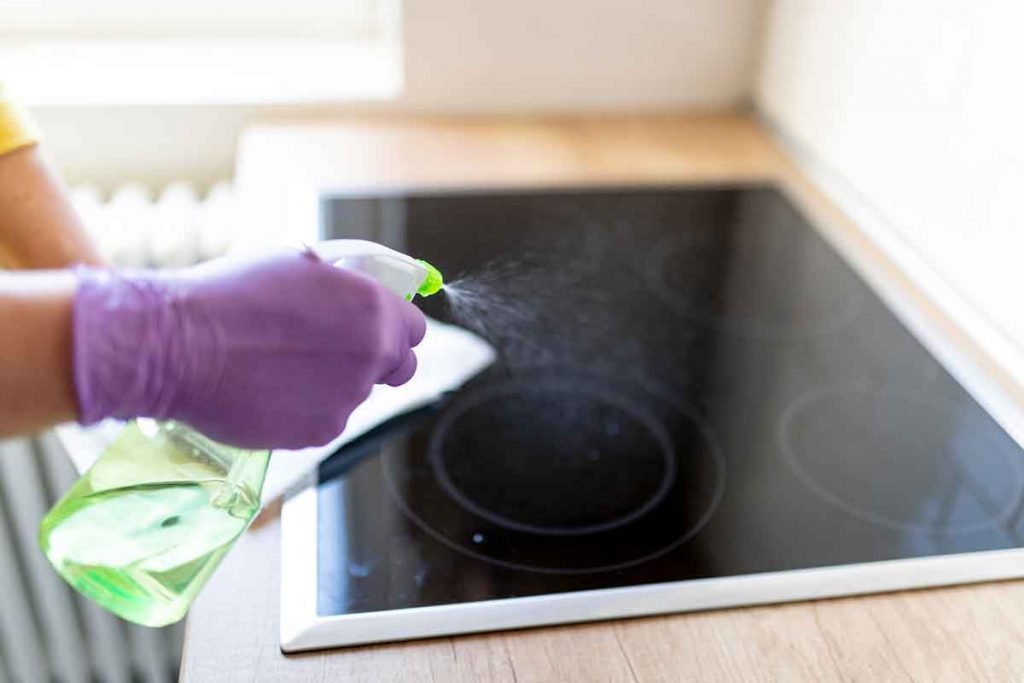If you’re looking to enhance your cooking experience, consider switching to induction cooktops, the latest in kitchen technology. These sleek appliances offer unparalleled precision, speed, and efficiency in cooking.
Unlike traditional stovetops, induction cooktops heat up quickly and are easy to clean. Besides, they add a modern touch to your kitchen decor.
But with all these advantages around them, you may still have some questions. How do they work or cost to install? How much space do they need?
Don’t worry, we’ve got you covered. In this article, we’ll dive into the world of induction cooktops and answer all your burning questions.
Read on.
Can You Install an Induction Cooktop Under the Countertop?
You can install an induction cooktop under the countertop. This type is known as an “invisible cooktop.
So, what is an invisible cooktop? It’s an induction cooktop that is installed under a countertop thus, it’s out of sight. All you need is to place your cookware in the right spot on the counter surface.
How Does an Induction Cooktop Work?
An induction cooktop heats cookware using an electromagnetic field instead of gas or electric heating elements. The cooktop has a copper wire coil that produces a magnetic field.
When you put an induction-compatible pan on the cooktop, the magnetic field heats the pan and cooks the food. The cooktop doesn’t get hot, which makes it safe and energy-efficient.
How Much Space Do You Need Under an Induction Cooktop?
When installing an induction cooktop, it is important to consider the space needed under it. This will depend on factors such as:
The Size of the Cooktop
A larger model will require more clearance than a smaller one. Also, the amount of heat generated by the cooktop and the effectiveness of its ventilation will also influence the amount of space needed under an induction cooktop.
If the cooktop generates too much heat, it can damage the surface and the components underneath, leading to potential safety hazards. Also, a high-quality ventilation system will be able to expel hot air and cooking fumes efficiently, reducing the amount of clearance space needed.
The Type of Installation You Plan to Use
The type of installation you choose will also influence the clearance needed under it. There are two options you can choose: flush mounted and drop-in. If you choose a flush-mounted cooktop, you will need more clearance under it. This is to ensure proper ventilation, electrical wiring, and plumbing connections. However, for a drop-in cooktop the required clearance is small because it sits in a cut-out section in the counter.
Do I Need an Electrician to Install an Induction Hob?
It’s highly likely you will need an electrician to install your induction hob. Here’s why:
- Professional installation is necessary for most induction hobs
Proper installation of most induction hobs requires the expertise and skills of a licensed electrician. This is because most of them have complex wiring. So, we recommend looking for an electrician to ensure you get the right wiring for your hob.
- The Wiring on Hobs Can be Complex
The wiring can be complex and it’s not worth the risk of attempting it yourself, especially if you don’t have the necessary knowledge and skills. So, we recommended you hire a professional electrician to handle the installation process to ensure it’s done safely and correctly.
FAQs
Do Induction Cooktops Need Ventilation?
Yes, you will still need ventilation because steam, smoke, and smell from certain foods will spread all over your house. Also, built-in units need a ventilation system under the counter to prevent overheating since the unit generates heat. So, ensure there won’t be anything blocking the air from circulation.
Can You Put a Built-in Oven Under an Induction Cooktop?
It’s definitely doable! There are models that are specifically designed for this type of configuration, and they’ve been tested and approved for safe use.
Just be sure to carefully review the requirements and specifications of all the appliances and consult with a qualified installer to ensure a safe and functional installation.
Are Induction Cooktops 110 or 220?
Most induction cooktops require a 220-volt connection. This is because induction cooktops need enough power to generate the magnetic fields that heat up your pots and pans. A 220-volt connection provides more power and ensures that your cooktop can heat up quickly and efficiently.
Some smaller, portable induction cooktops may run on a 110-volt connection, but it’s always best to check the specifications of the specific model you’re considering.
To sum up, this article has hopefully answered most of the questions you may have had about induction cooktops.
We’ve learned that while it is technically possible, there are several important considerations to keep in mind. This includes ensuring that there is enough clearance and ventilation and selecting compatible materials, among other factors.
The most important parts are to ensure you consult with a qualified installer, review the manufacturer’s specifications, and make sure your countertop can handle the heat.
So go ahead and explore your options, and don’t be afraid to get creative with your kitchen layout – the possibilities are endless!



